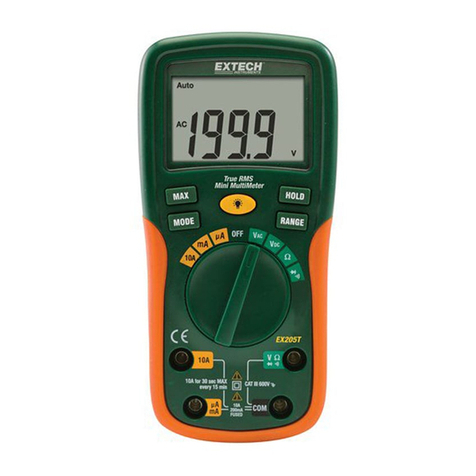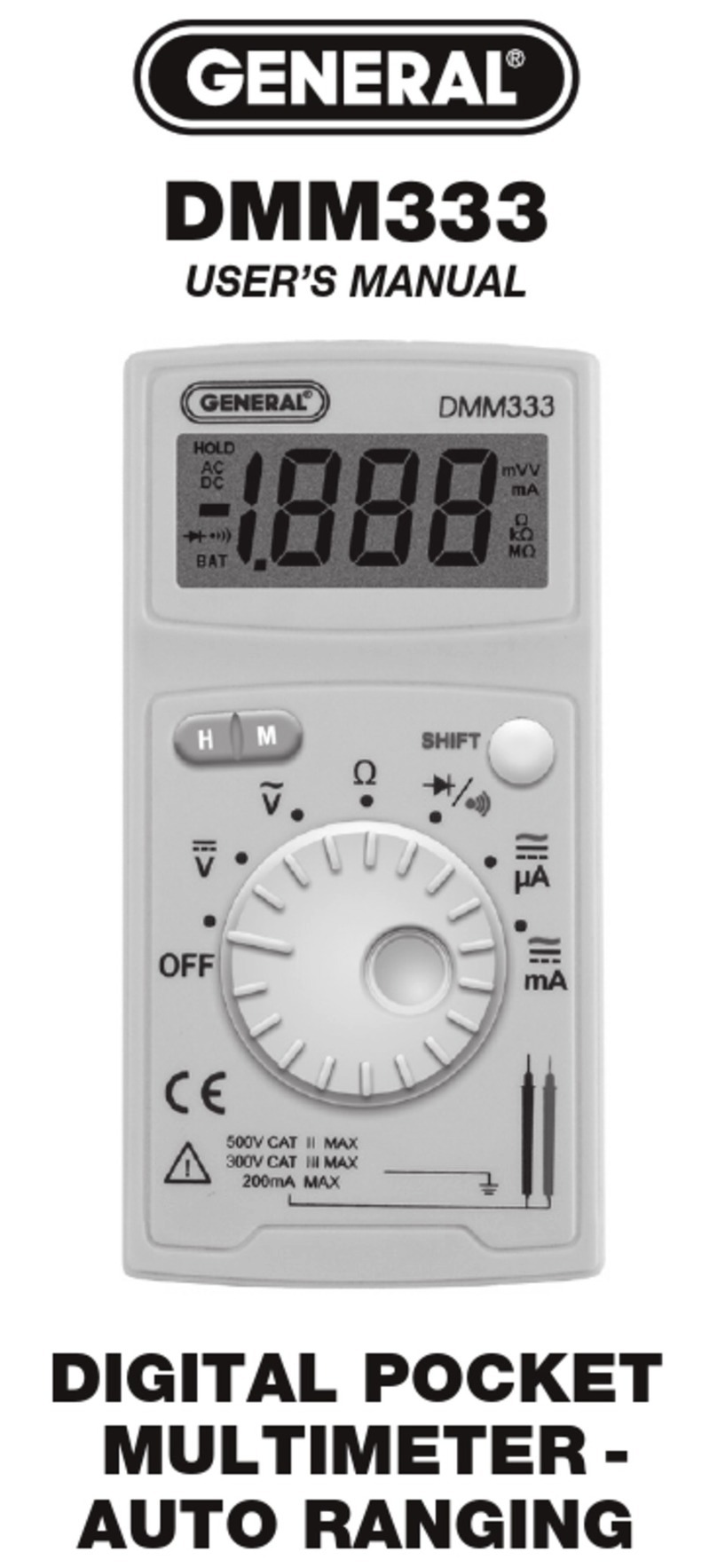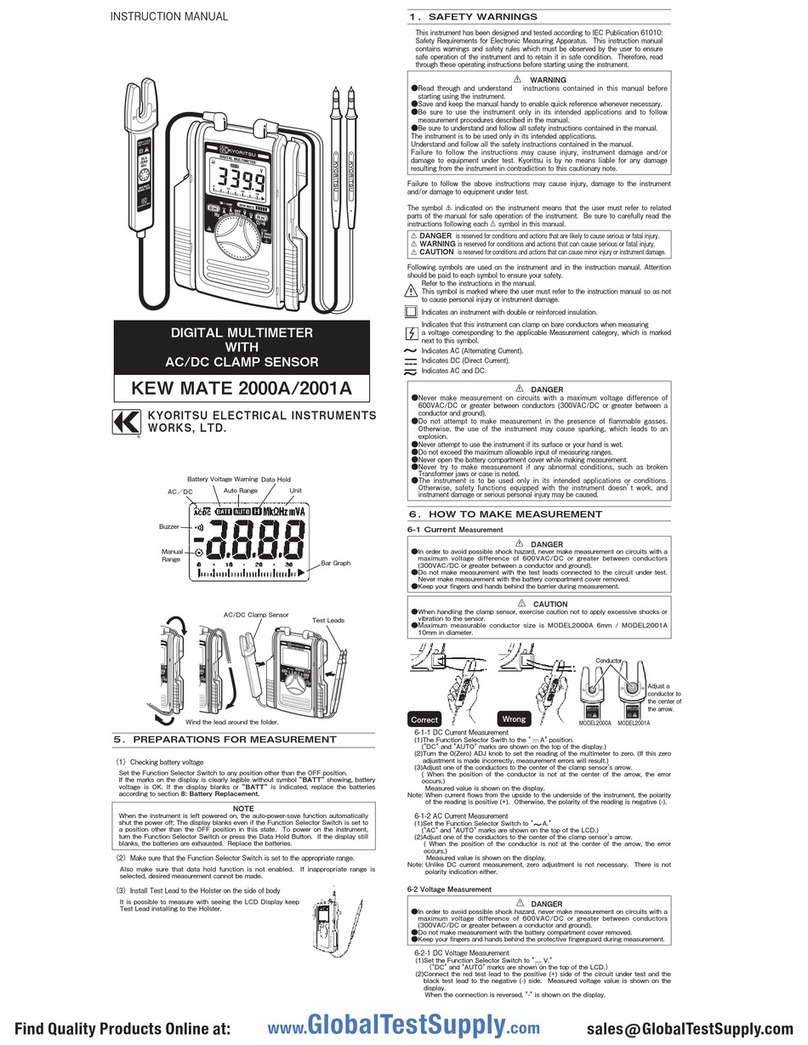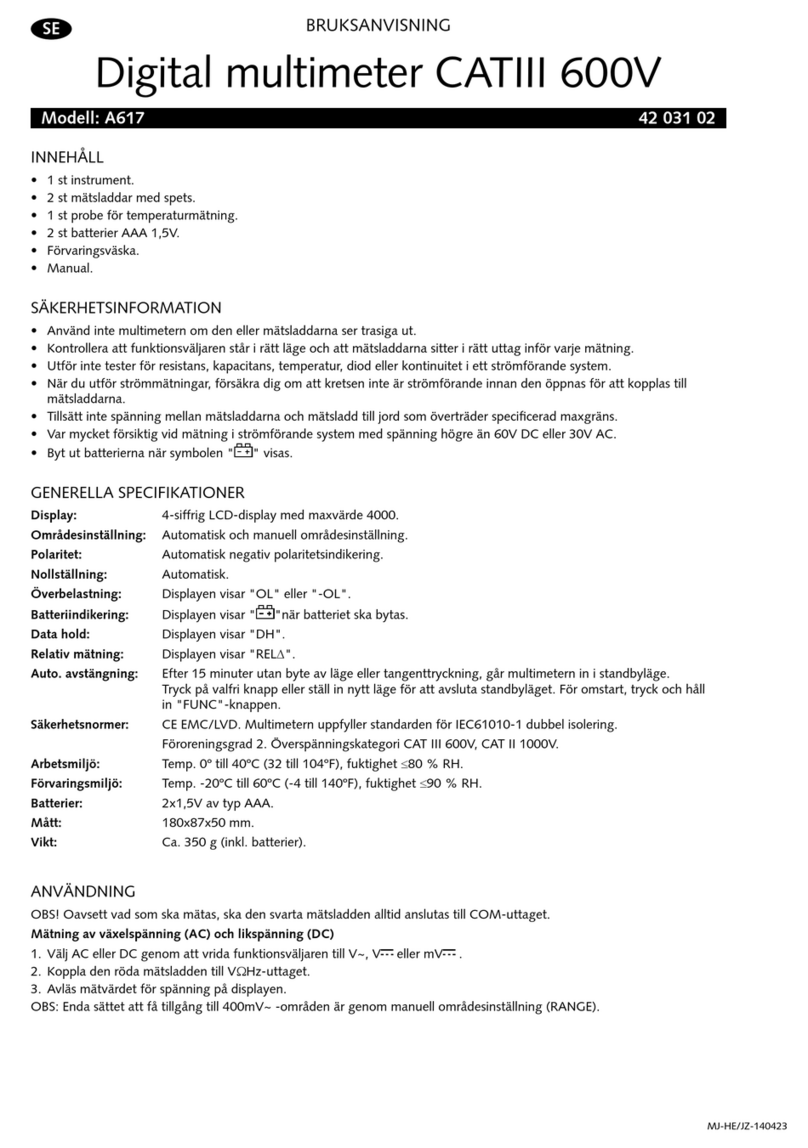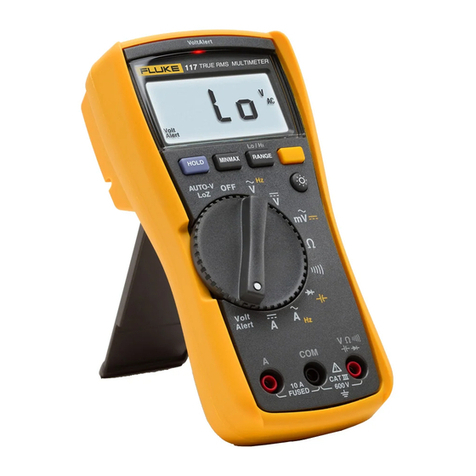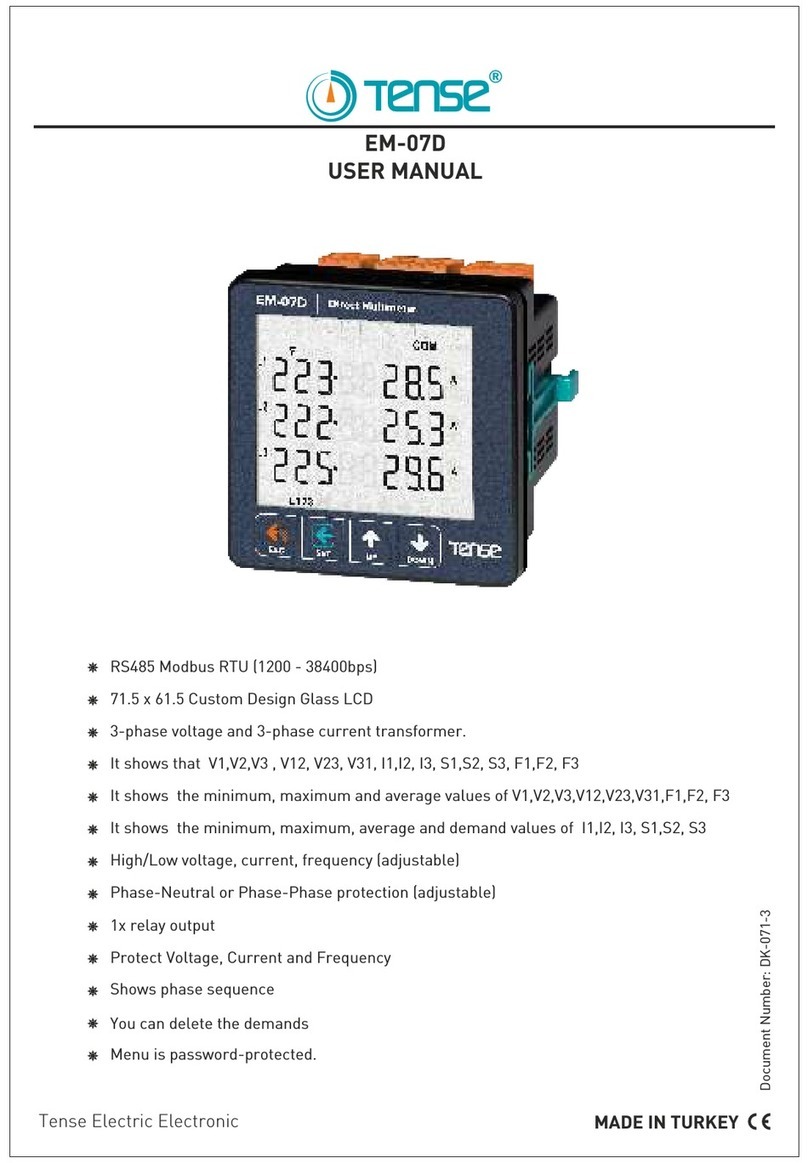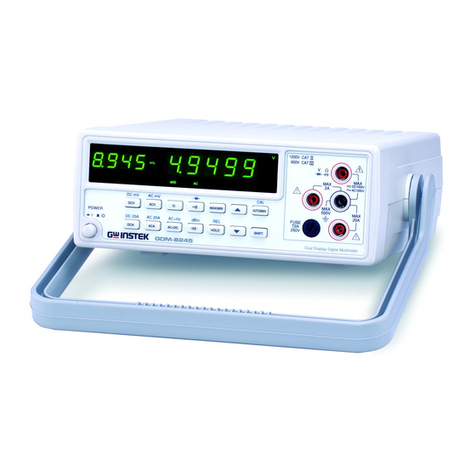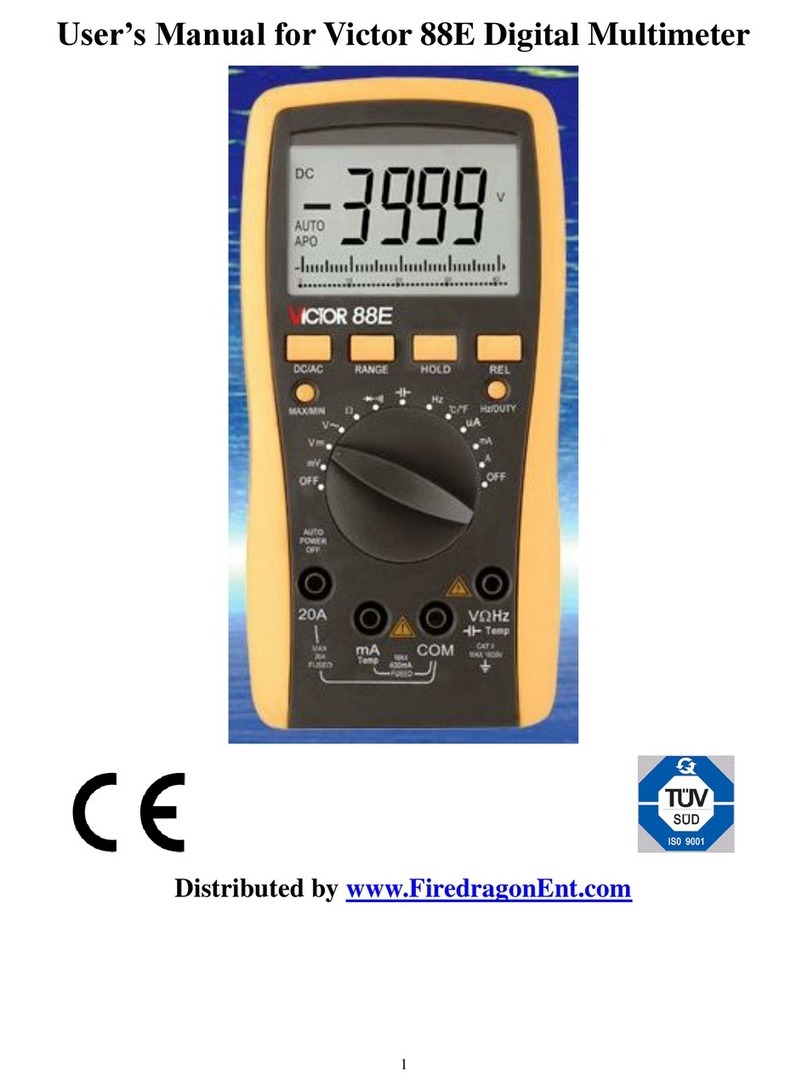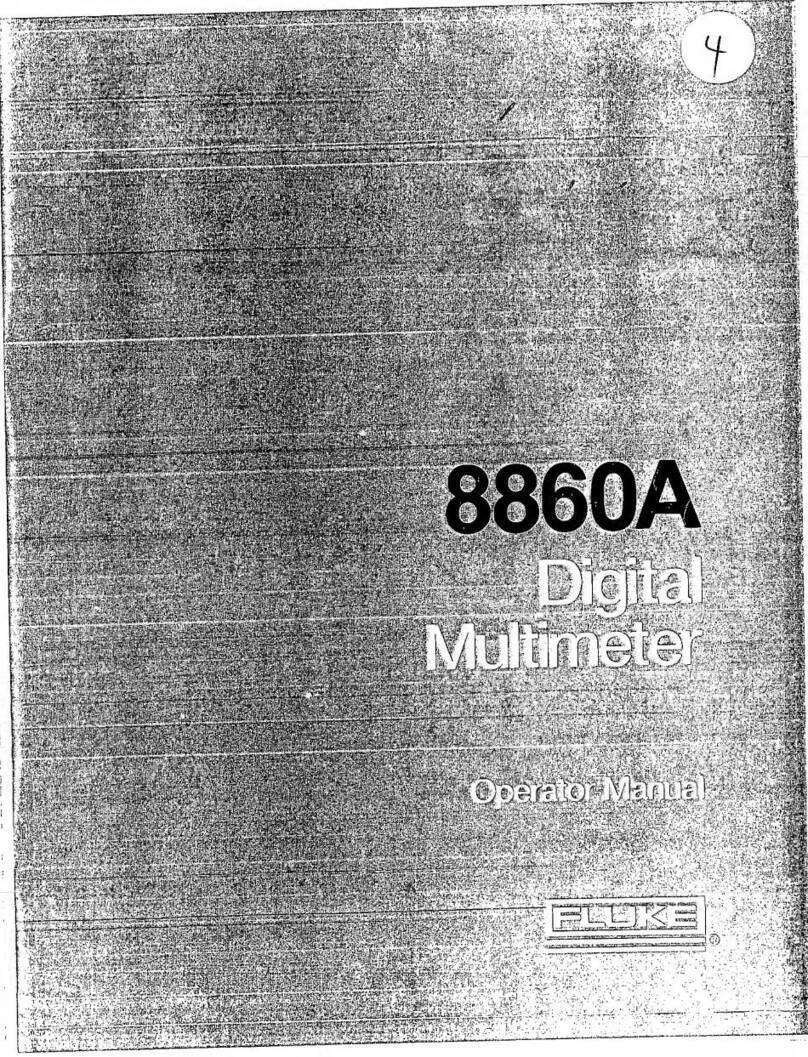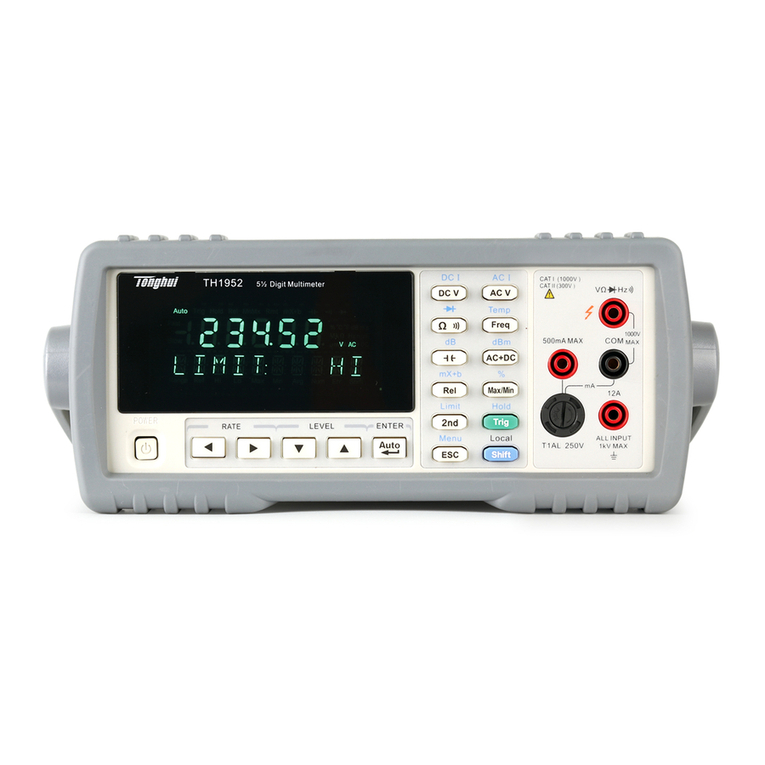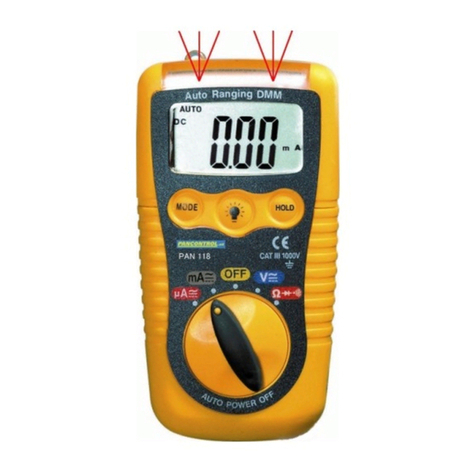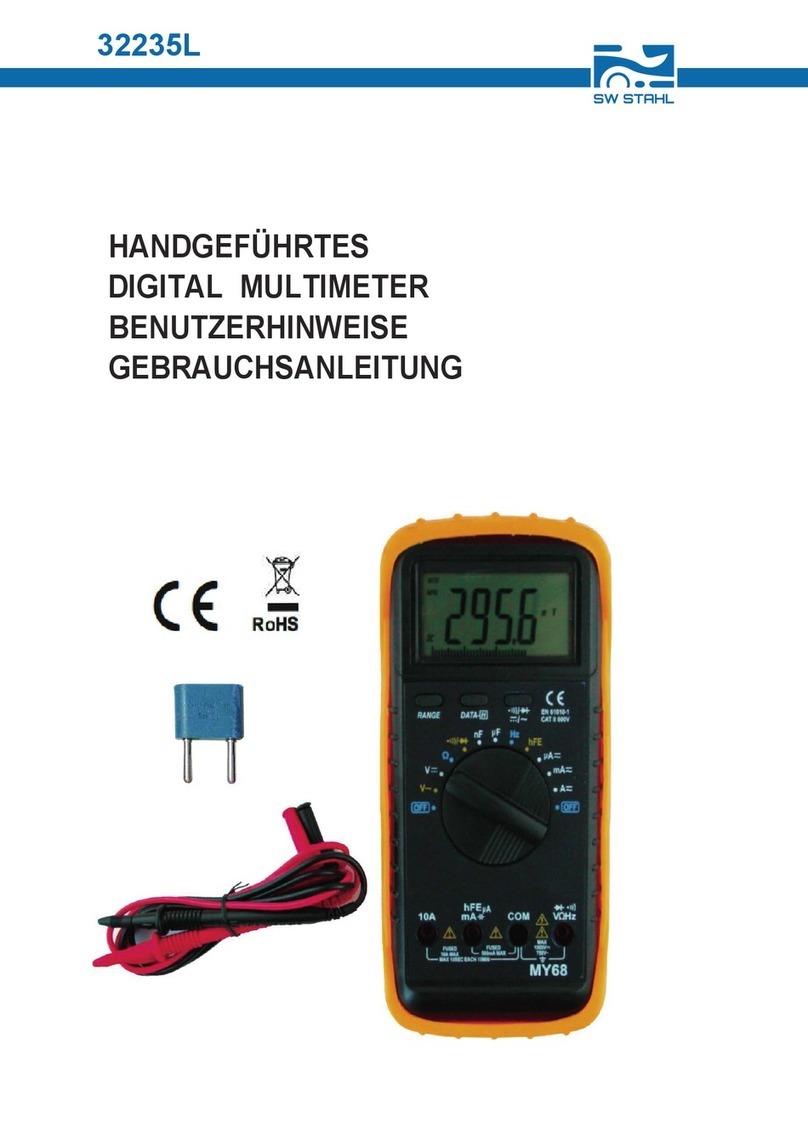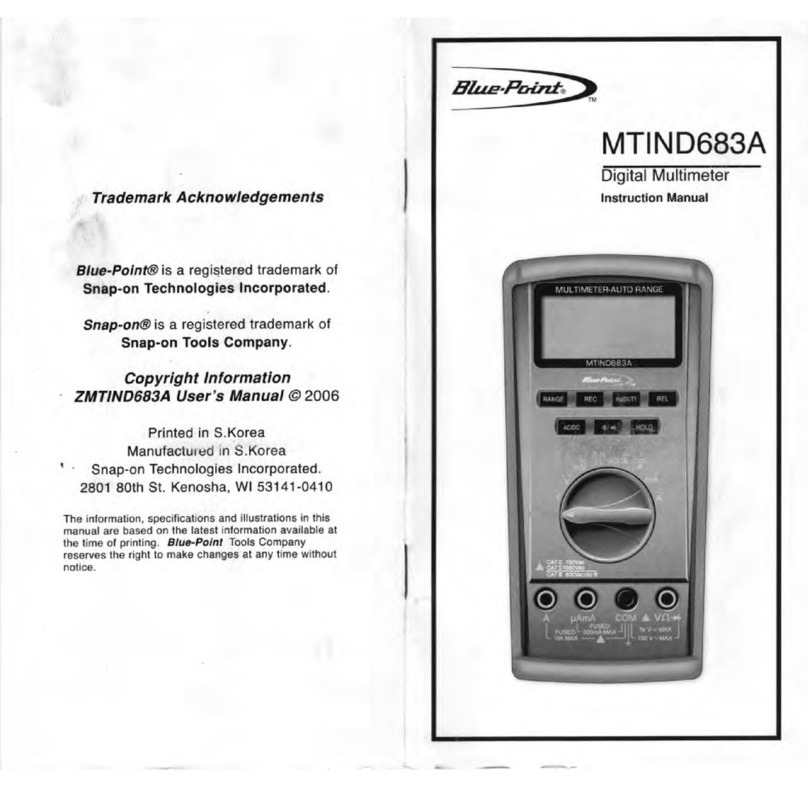NexxTech 2211813 User manual

2211813
DUAL DISPLAY 29 AUTO RANGE
DIGITAL MULTIMETER
OPERATOR’S MANUAL

CONTENTS PAGE
1. Safety Information ............................................................................. 1
1.1 Introduction ............................................................................. 1
1.2 Usage ............................................................................. 2
1.3 Symbols ............................................................................. 3
1.4 Maintenance ............................................................................. 4
2. Description ............................................................................. 5-10
3. Operating Instructions ............................................................................. 11
3.1 Measuring Voltage ............................................................................. 11
3.2 Measuring Current ............................................................................. 11
3.3 Measuring Resistance ............................................................................. 12
3.4 Continuity Test ............................................................................. 13
3.5 Testing Diodes ............................................................................. 13
3.6 Testing Transistors ............................................................................. 14

4. Specifications ............................................................................. 14
4.1 General Specifications ............................................................................. 15
4.2 DC Voltage ............................................................................. 16
4.3 AC Voltage ............................................................................. 17
4.4 DC Current ............................................................................. 18
4.5 AC Current ............................................................................. 19
4.6 Resistance ............................................................................. 20
4.7 Diode ............................................................................. 21
4.8 Audible Continuity ............................................................................. 21
4.9 Transistor ............................................................................. 21
5. Accessories ............................................................................. 22
5.1 Supplied with the multimeter ............................................................................. 22
5.2 How to use the holster ............................................................................. 22
6. Battery and Fuse Replacement ............................................................................. 24

1. SAFETY INFORMATION
This multimeter has been designed according to IEC-1010 concerning electronic measuring
instruments with an overvoltage category (CAT II) and pollution 2.
Follow all safety and operating instructions to ensure that the meter is used safely and is kept in
good operating condition.
1.1 INTRODUCTION
• When using the meter, the user must observe all normal safety rules concerning:
- Protection against the dangers of electrical current.
- Protection of the meter against misuse.
• Full compliance with safety standards can be guaranteed only if used with test leads supplied. If
necessary, they must be replaced with the same model or same electric ratings. Measuring leads
must be in good condition.
-1-

1.2 USAGE
• Never exceed the protection limit values indicated in specifications for each range of
measurement.
• When the meter is linked to a measurement circuit, do not touch unused terminals.
• When the value scale to be measured is unknown beforehand, set the range selector at the
highest position.
• Before rotating the range selector to change functions, disconnect test leads from the circuit under
test.
• When carrying out measurements on TV or switching power circuits, always remember that there
may be high amplitude voltage pulses at test points which can damage the meter.
• Never perform resistance measurements on live circuits.
• Always be careful when working with voltages above 60V dc or 30V ac rms. Keep fingers behind
the probe barriers while measuring.
-2-

1.3 SYMBOLS
Important safety information, refer to the operating manual.
Dangerous voltage may be present.
Earth ground.
Double insulation (Protection class II).
-3-
!

1.4 MAINTENANCE
• Before opening the meter, always disconnect test leads from all sources of electric
current.
• For continue protection against fire, replace fuse only with the specified voltage and current
ratings:
F1: F 500mA/250V F2: F 10A/250A
• If any faults or abnormalities are observed, the meter cannot be used and it has to be checked out.
• Never use the meter unless the back cover is in place and fastened fully.
• To clean the meter, use a damp cloth and mild detergent only, do not use abrasives or solvents on it.
-4-

2. DESCRIPTION
This meter is an auto ranging professional measuring instrument with 33/4 digit LCD, capable of
performing functions:
- DC voltage measurement (Auto Ranging)
- AC voltage measurement (Auto Ranging)
- DC current measurement
- AC current measurement
- Resistance measurement (Auto Ranging)
- Diode test
- Transistor test
- Audible continuity test
-5-

1-7. Function Buttons
8. Transistor Testing Socket
9. Rotary Switch
10. V/Ω Input Jack
11. COM Input Jack
12. mA Input Jack
13. A Input Jack
-6-

UP (Range Selecting Button)
When this button is pushed, voltage ranges will change as:
4V 40V 400V 1000V 400mV
Or resistance ranges change as:
400Ω 4kΩ 40kΩ 400kΩ 4MΩ 40MΩ
DOWN (Range Selecting Button)
When this button is pushed, voltage ranges will change as:
4V 400mV 1000V 400V 40V
Or resistance ranges change as:
400Ω 40MΩ 4MΩ 400kΩ 40kΩ 4kΩ
-7-

AUTO (Auto Ranging Button)
When this button is pushed in manual ranging mode, the meter will return to be in auto ranging
mode immediately and “AUTO” symbol will appear on the top of the LCD.
DATA-H (Data Hold Button)
When this button is pushed, the display will keep the last reading and “D-H” symbol will appear on
the LCD until pushing it again.
A /A~ (DCA/ACA Selecting Button)
This button is used to select ACA or DCA measuring mode.
i (Silence Selecting Button)
When this button is pushed, the built-in buzzer will not sound except in continuity testing until
pushing this button again.
-8-

POWER (Power ON-OFF Button)
This button is used to turn the meter ON or OFF. In Order to extend the battery life, an Auto Power
OFF function is provided. If no key-inputs happen around 30 minutes, the meter will be turned off
automatically. To turn the meter on again, just push this button once.
ROTARY SWITCH
This switch is used to select functions.
INPUT JACKS
This meter has four input jacks that are protected against overload to the limits. During use, connect
the black test lead to the COM jack and the red test lead as shown below:
-9-

Function Red Lead Connection Input limits
DCV / ACV V / Ω 1000V DC or 750V rms AC
Ω V / Ω 250V DC or rms AC
V / Ω 250V DC or rms AC
i V / Ω 250V DC or rms AC
µA / mA mA 500mA DC or rms AC
A A 10A DC or rms AC
µA / mA and A ranges are protected by fuses
-10-

3. OPERATING INSTRUCTIONS
3.1 MEASURING VOLTAGE
1. Connect the black test to the COM jack and the red test lead to the V/Ω jack.
2. Set the function switch at V or V ~ range to be used and connect test leads across the source
or load under measurement.
3. Read LCD display. The polarity of red connection will be indicated when making a DC
measurement.
3.2 MEASURING CURRENT
1. Connect the black test lead to the COM jack and the red test lead to the mA jack for a maximum
of 500mA. For a maximum of 10A, move the red lead to the A jack.
2. Set the function switch at µA, mA or A range to be used and push / ~ button to select DCA of
ACA measuring mode.
-11-

3. Connect test leads in series with the load in which the current is to be measured.
4. Read LCD display. The polarity of red lead connection will be indicated when making a DC
measurement.
3.3 MEASURING RESISTANCE
1. Connect the black test lead to the COM jack and the red test lead to the V/Ω jack. (NOTE: The
polarity of the red lead connection is positive “+”)
2. Set the function switch at Ω range to be used and connect test leads across the resistance under
measurement.
NOTE:
1. For resistance above 1MΩ, the meter may take a few seconds to stabilize reading. This is
normal for high resistance measuring.
2. When the input is not connected, i.e. at open circuit, the figure “OL” will be displayed for the over
range condition.
-12-

3. When checking in-circuit resistance, be sure the circuit under test has all power removed and all
capacitors fully discharged.
3.4 CONTINUITY TEST
1. Connect the black test lead to the COM jack and the red test lead to the V/Ω jack. (NOTE: The
polarity of red lead connection is positive “+”)
2. Set the function switch at i position and connect test leads to two points of the circuit under
measurement. If continuity exists (i.e., the resistance is lower than 50Ω), built-in buzzer will
sound.
3.5 TESTING DIODES
1. Connect the black test lead to the COM jack and the red test lead to the V/Ω JACK. (NOTE: The
polarity of the red lead connection is positive “+”)
2. Set the function switch at position.
-13-

3. Connect the red lead to the anode of the diode to be tested and the black lead to the cathode.
Read LCD display to get the forward voltage drop of the diode under testing.
3.6 TESTING TRANSISTORS
1. Set the function switch at hFE position.
2. Identify whether the transistor NPN or PNP type and locate emitter, base and collector lead.
Insert Ieads of the transistor to be tested into proper holes of the testing socket on the front panel.
3. LCD display will show the approximate hFE value.
4. SPECIFICATIONS
Accuracy is specified for a period of one year after calibration and at 64°F to 82°F (18°C to 28°C)
with relative humidity to 80%.
-14-

4.1 GENERAL SPECIFICATIONS
Max. Voltage Between Terminals and Earth Ground 1000V dc or 750V rms ac (sine)
Fuse Protection µA, mA: F 500mA/250V A:F 10A/250V
Power Supply 9V NEDA1604 6F22 006P
Display LCD, 3999 counts max., updates 2-3/sec
Measurement Method Dual slope integration A/D converter
Ranging Method Auto/Manual
Over range Indication “OL” displayed
Polarity Indication “ - ” displayed automatically
Low Battery Indication “BATT” displayed
Operating Temperature 32°F to 104°F (0°C to 40°C)
Storage Temperature 10°F to 122°F (-10°C to 50°C)
Dimension 3.5 x 7.4 x 1.2 inch (91 x 189 x 31.5 mm)
Weight 11oz (310g) (Including battery)
-15-

Range Resolution Accuracy
400mV 0.1mV ± 0.8% of rdg ± 2 digits
4V 1mV ± 0.5% of rdg ± 2 digits
40V 10mV ± 0.5% of rdg ± 2 digits
400V 0.1V ± 0.5% of rdg ± 2 digits
1000V 1V ± 0.8% of rdg ± 2 digits
4.2 DC VOLTAGE
Input Impedance: 10MΩ, more than 1.00MΩ at 400mV range.
-16-

4.3 AC VOLTAGE
Input Impedance: 10MΩ
Frequency Range: 40 to 400Hz
Response: Average, calibrated in rms of sine wave.
-17-
Range Resolution Accuracy
400mV 0.1mV -------
4V 1mV ± 0.6% of rdg ± 0.2% of full scale ± 3 digits
40V 10mV ± 0.6% of rdg ± 0.2% of full scale ± 3 digits
400V 0.1V ± 0.6% of rdg ± 0.2% of full scale ± 3 digits
750V 1V ± 1.2% of rdg ± 3 digits
Table of contents
